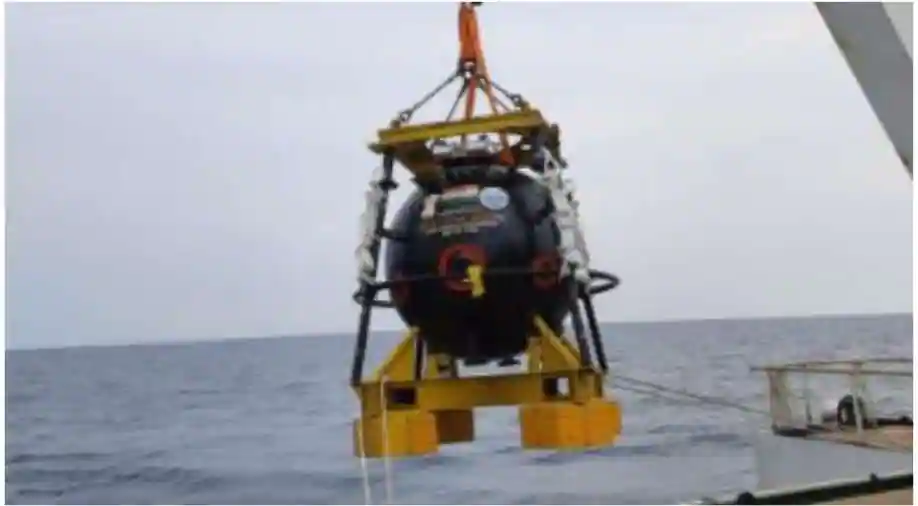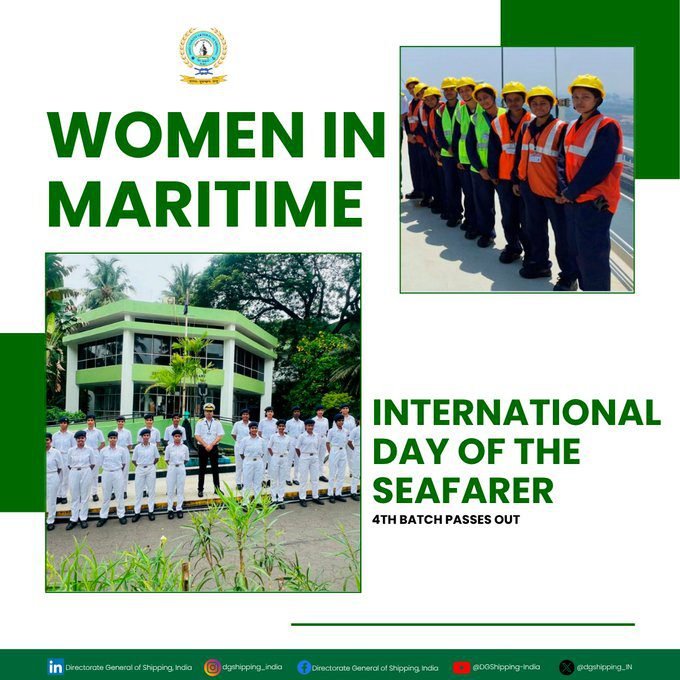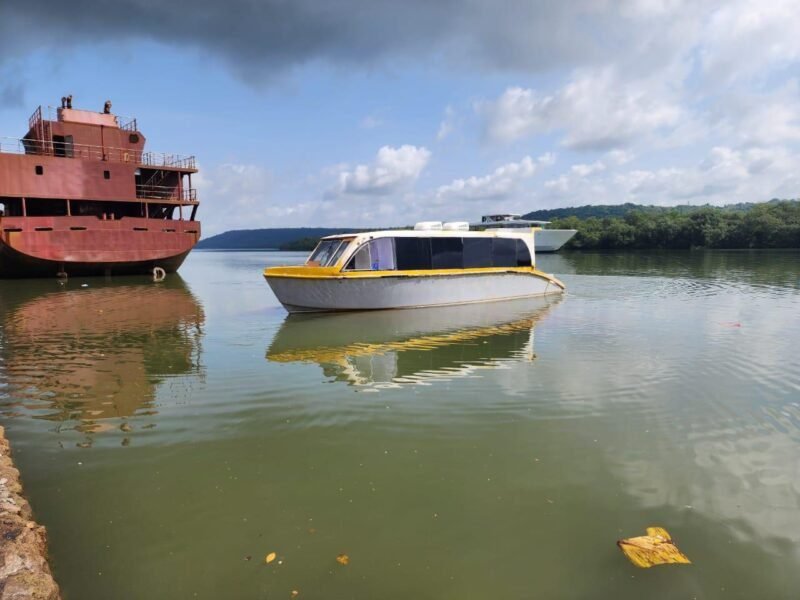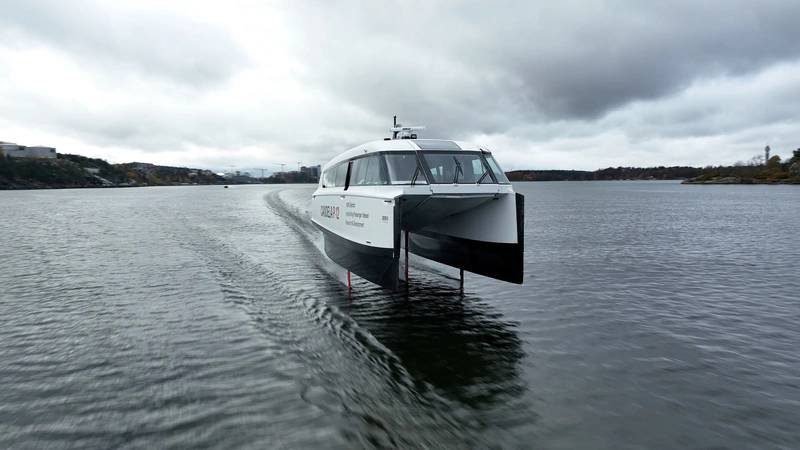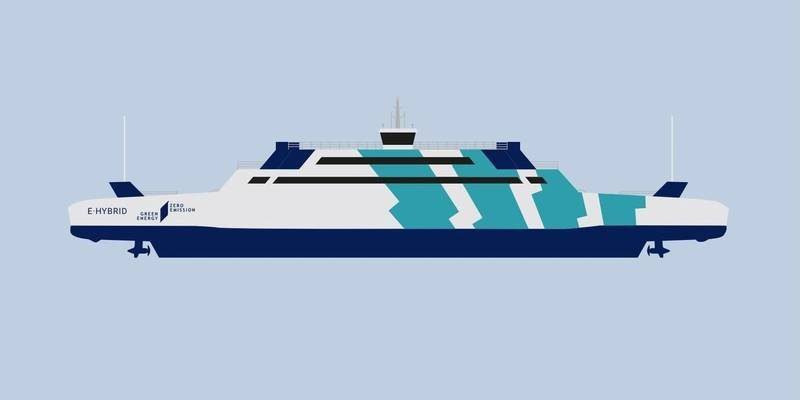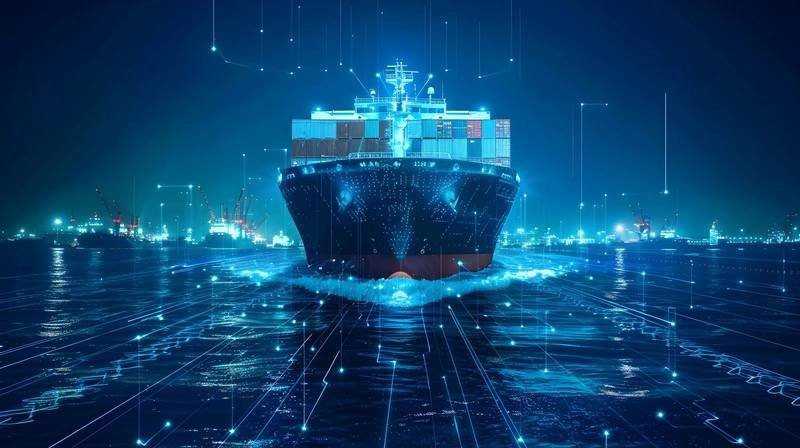Following Stories compiled in this News Digest for the week from 25 Jul 2022 to 31 Jul 2022 in descending order:
- First Solid Form Hydrogen Propulsion Vessel Ordered for Amsterdam
- Scenic Group Overcomes Cyber Attack with IT Restructure
- India’s first manned ocean mission ‘Samudrayaan’ to send humans in 6-km ocean depth
- Mysterious Plastic Objects Found In A 45-Day-Long Sweep Of The Great Pacific Garbage Patch
- India’s first indigenous aircraft carrier Vikrant handed over to Indian Navy
- Insufficient Number Of Seafarers Prevents Opening Of The Grain Corridor In Ukraine
- 86% Of Maritime Organisations Have Now Embraced Remote Working And UK Leads The Way
- World’s First Revolutionary, Electric “Fast Ferry” to Enter Service
- Satellite RF Tracking Follows the “Dark” Ships That AIS Can’t See
- AIDA Expands Job Platforms and Recruitment
- Seafarers Recruitment Service Provider Is Not An intermediary
- 26 Maritime Countries Met For Discussing Maritime Issues
- Progressive Measures Taken By Indian Government To Increase Job Opportunities For Seafarers
- Maritime sector and satellite infrastructure will be particular targets for cyber attacks in the second half of 2022
- IMO Welcomes Maritime Human’ Corridor In Black Sea
- Seafarers on edge as monkeypox declared a global public health emergency
- Seafarers’ wellbeing and ship safety: The role of Internet onboard
- Baltic Exchange to provide standardised emissions reference point for shipping industry
- Port Of LA Calls FBI After Cyber Attacks Double
- Crew Familiarisation is critical when taking over a vessel
- ’No, I’m not the captain’s wife’: Breaking the bias at sea
First Solid Form Hydrogen Propulsion Vessel Ordered for Amsterdam
31 Jul 2022
The construction contract has been awarded for a hydrogen demonstration vessel that will use a new solid form hydrogen for propulsion that researchers believe will pave the way for a safer and broader application of hydrogen to fuel vessels. Known as Neo Orbis, the demonstration vessel is expected to start trials in June 2023 as the next phase in the multi-year European H2Ships program.

The construction contract for the Neo Orbis was awarded to Next Generation Shipyards in the Netherlands. The tender process for the vessel’s construction began in March 2022. The vessel will be approximately 65 feet long similar to the tour boats that have operated in Amsterdam for years transporting passengers and offering sightseeing excursions. It is designed to operate both in Amsterdam’s canals as well as the seaport area between Amsterdam and Ijmuiden.
According to the project organizers, it will become the first ship in the world sailing on electricity, propelled with hydrogen in a solid form as the energy carrier. The fuel is made by mixing sodium borohydride powder with a stabilizer and ultrapure water into an aqueous non-combustible liquid fuel. The dissolved sodium borohydride reacts with a catalyst, producing hydrogen while the spent fuel is converted back to sodium borohydride. In the long term, the project envisions creating a closed system, by turning the residual materials into new sodium borohydride fuel.
The heat extracted in the process is also applied to warm the interior of the vessel while the water is recycled. Two batteries, 25 KWh each, will provide backup energy while a safety system monitors the concentration of hydrogen and automatically suspends the process well before a dangerous concentration level is reached.
In addition to being a high energy density fuel source, they highlight that it is an innately safer form of energy. Most of the energy is stored on board as sodium borohydride, which is much more stable. It also has a much higher ignition point versus hydrogen gas, which can ignite at room temperature if there is a spark, and even higher than diesel. Another major advantage of this hydrogen carrier is that it can be bunkered safely in many places.
The vessel is seen as an important step in the efforts toward emission-free shipping in the port of Amsterdam by 2050. In addition to serving as the port’s flagship, the project believes it will serve as a model to support the adoption of hydrogen power for inland shipping, short sea, dredging, offshore, and possibly patrol vessels and naval vessels. Reference
Scenic Group Overcomes Cyber Attack with IT Restructure
31 Jul 2022
On February 20 of this year, Scenic Group was subject to a cyber attack, which caused issues with guest pre-travel documentation and customer service overall. The company overcame the challenges by completely rebuilding its IT systems and is now able to provide top-tier services to its customers once again.

According to a statement by company founder Glen Moroney, the hackers who took control of Scenic’s systems demanded a ransom, and he decided to refuse to pay it and enable these criminals to continue hacking other businesses.
Yet, stronger measures had to be taken.
Despite the initial projection of a short reboot lasting up to three weeks following the attack, the company chose a total system rebuild that took more than nine weeks. They were able to keep all guest data secure and leak-free thanks to this process.
Although communication with guests and industry partners was nearly impossible, and call center times were impacted by the incident, Scenic Group has changed dramatically since then.
Moroney further noted that some regions have seen an unprecedented level of flight rescheduling and late flight cancellations – even on the day of departure, resulting in a significant volume of incoming calls to the customer contact center.
Scenic’s pre-departure document issuance is now approaching the pre-cyber attack timeframe, and average wait times for the customer contact center have “decreased dramatically”, Moroney commented. Reference
India’s first manned ocean mission ‘Samudrayaan’ to send humans in 6-km ocean depth
30 Jul 2022
India is making considerable efforts to unveil the mysteries tucked in the deep sea waters. Under the mega ocean mission ‘Samudrayaan’, the nation aims to send a team of experts into the deep sea to carry out various deep underwater studies.

India’s first manned ocean mission was launched by the Ministry of Earth Sciences (MoES). As part of the mission, a self propelled manned submersible viz ‘MATSYA 6000’ is being developed to carry 3 human beings to a water depth of 6,000 meters in the ocean with a suite of scientific sensors and tools for deep ocean exploration.
National Institute of Ocean Technology (NIOT), an autonomous institute under MoES, has developed 6,000 m depth rated Remotely Operated Vehicle (ROV) and various other underwater instruments, the written reply further stated.
Other state-of-art instruments for underwater exploration by NIOT include Autonomous Coring System (ACS), Autonomous Underwater Vehicle (AUV) and Deep Sea Mining System (DSM) for the exploration of deep sea.
With Mission ‘Samudrayaan’, India Joined Elite Group
With the launch of the unique ocean mission ‘Samudrayaan’ in October 2021, India joined the elite club of nations such as the USA, Russia, Japan, France, and China to have niche technology and vehicles to carry out subsea activities.
The preliminary design of the manned submersible ‘MATSYA 6000’ is completed and realization of the vehicle has been started along with various organizations including ISRO, IITM, and DRDO roped-in to support the initiative, the Union Minister added.
Deciphering ‘MATSYA 6000’: The state-of-art submersible vehicle
Developed indigenously, MATSYA 6000 is a manned submersible vehicle. It will facilitate the Ministry of Earth Sciences (MoES) in conducting deep ocean exploration.
The underwater vehicles are essential for carrying out subsea activities such as high-resolution bathymetry, biodiversity assessment, geoscientific observation, search activities, salvage operation, and engineering support. With improved maneuvering and excellent vision systems, the unmanned underwater vehicles become the loyal companion for researchers to get a feel of direct physical presence and to get better intervention capability. Reference
Mysterious Plastic Objects Found In A 45-Day-Long Sweep Of The Great Pacific Garbage Patch
30 Jul 2022
Following 45 days of cleaning the Great Pacific Garbage Patch, a cargo vessel hauling approximately 200,000 pounds of waste reached Sausalito on Tuesday.

The 132-foot cargo vessel from the Ocean Voyages Institute accumulated over 96 tons of ocean debris – including sorts of fishing nets and plastic toys – during the cleanup voyage from Honolulu through the North Pacific Gyre (or the patch).
Across 4,600 nm, the ship’s crew members recovered the garbage haul in the vast Pacific area between San Francisco and Hawaii that is prone to an accumulation of swirling debris – what the captain of the ship, Locky MacLean, referred to as miles of whirlpooling and gyrating plastic debris floating all around.
The crew members discovered derelict fishing nets – some of these weighed up to nearly six tons when several nets glommed together – as well as an abandoned fishing boat and all sorts of consumer plastics, including toys, containers, and lawn chairs, said Mary Crowley, the president and founder of the Sausalito-based institute that has been spearheading many ocean cleanup initiatives starting from 2009.
The most perplexing items this time were mysterious-looking plastic floating items; some appeared to have been afloat for years. An object, at 20 feet in width and 6 feet in height, took up the width of the vessel’s cargo hold. The captain estimated that it weighed about 3.5 tons. Reference
India’s first indigenous aircraft carrier Vikrant handed over to Indian Navy
29 Jul 2022
The Cochin Shipyard Limited (CSL) on Thursday handed over India’s first Indigenous Aircraft Carrier (IAC) ‘Vikrant’ to the Indian Navy.

IAC Vikrant will be commissioned on August 15 to commemorate ‘Azadi ka Amrit Mahotsav’. The fourth phase of sea trials of the aircraft carrier was successfully completed on July 10.
The first sea trials of the IAC were successfully completed in August last year, followed by the second and third phases in October last year and January this year respectively.
With the delivery of the IAC, India would join a select group of nations with the capability to indigenously design and build an aircraft carrier.
All about the ship
Designed by Indian Navy’s Directorate of Naval Design (DND), the warship has been built at the Cochin Shipyard Limited , a public sector shipyard under the Ministry of Ports, Shipping and Waterways.
The basic design of the IAC has been developed indigenously by the DND of the Indian Navy and the entire detailed engineering, construction and system integration is undertaken by the CSL.
It is the first time in the country that a ship of the size of an Aircraft Carrier is completely modeled in 3D and production drawings extracted from the 3D model, the government said in a release.
Built at a cost of around Rs 23,000 crore, the warship is 262 metres long, 62 metres wide and it has a height of 59 metres. The construction of the mammoth ship started in 2009. Reference
Insufficient Number Of Seafarers Prevents Opening Of The Grain Corridor In Ukraine
29 Jul 2022
Finding a sufficient number of seafarers wanting to sail vessel stuck at Ukraine’s ports is on the verge of posing a huge challenge to the proposed grains corridor that has been designed to ease an international food crisis. Ukraine and Russia signed a deal last week to help resume grains and fertilizer exports currently blocked in the Black Sea. On Wednesday, Turkey also launched a center to coordinate the shipments resumption.

At the beginning of the conflict in late February, almost 2,000 seafarers worldwide were stranded on 94 vessels at various Ukrainian ports. About 450 are left on approximately 80 vessels that remain; these are primarily dry bulk vessels that carry grain, but also other cargo vessels loaded with other commodities, consistent with the data from the UN shipping agency the International Maritime Organization (IMO), and shipping sources.
But about 80 vessels stay blocked in Ukraine and the evacuation of most of their crew members indicates more mariners are required to have the cargoes moving.
Following last week’s UN-brokered contract, the initial shipments of Ukrainian grains could depart from the Black Sea ports within some days. However, few seafarers are expected to be able to travel to the region until they perceive the safe passage of the first ships, which may need to be guided around the sea mines. Two sailors have lost their lives and seven commercial vessels were hit by projectiles – and two sank – off Ukraine’s coast since the war that started in February.
Initially, many vessels are going to be required to be backed by the Ukrainians, four anonymous industry sources reported. They added that finding a decent number of local seafarers would even be a bigger challenge. Reference
86% Of Maritime Organisations Have Now Embraced Remote Working And UK Leads The Way
29 Jul 2022
Spinnaker, the maritime people experts, have revealed the results of their Remote and Hybrid Working report, with 86% of respondents stating that they have introduced some form of remote working, post-pandemic.

Almost half (45%) of respondents now have a formal policy in place for remote working arrangements. The most popular working pattern is a hybrid approach allowing two days at home per week, which has been adopted by 31% of employers.
Geographically, the top regions that have embraced remote working are the UK, followed by Singapore and the USA. The majority of respondents (70%) confirmed their remote working arrangement applies to all employees, with some advising that line manager approval is also required. Reference
World’s First Revolutionary, Electric “Fast Ferry” to Enter Service
29 Jul 2022
The MS MEDSTRAUM, the world’s first fully electric vessel and classified as a high-speed craft, was completed by the Norwegian shipyard Fjellstrand and delivered to its homeport in Stavanger, Norway. The ship can reach speeds of up to 27 knots and is scheduled to begin regular commuter service in late summer.

The vessel weighs 260 gross tons and is around 98 feet long. It has a capacity of 147 passengers and will be operated by a crew of 3. It has two 550kW electric motors and 1524 kWh battery capacity with 2.3 MW charging power. The vessel cost $11 million to build, half of being underwritten by the European Union due to being a demonstration project. It is to sail as a regular service ferry between Stavanger, Byøyene, and Hommersåk in Norway, where a typical trip will be around 35 to 40 minutes long. It is expected to cut emissions by 1500 tonnes compared to the traditional fuel-intensive fast ferries.
Maritime CleanTech, the cluster that initiated the EU-funded TrAM project that led to the creation of the MEDSTRAUM, has stated that the vessel was built using modular manufacturing methods. This reduced the manufacturing and engineering costs and will help them produce these vessels at a much more economical price. Reference
Satellite RF Tracking Follows the “Dark” Ships That AIS Can’t See
28 Jul 2022
Government, NGO and private-sector researchers have long relied upon AIS to track the movements of vessels, and the tool is invaluable for spotting suspicious activity. However, AIS has one well-known drawback: suspect ships can (and do) turn off their AIS signals at the moments when their activities are most suspicious. There are several ways to work around this, like using satellite imaging to look for visual evidence of the target vessel, but one new method stands out: radio frequency data acquisition, an application of military signals intelligence for the maritime world.

Using satellite receivers, companies like Unseen Labs, Kleos Space and Spire Global monitor a wide swath of the RF spectrum for all kinds of radio emissions. Their satellites can geolocate the source of a radio frequency transmission from a ship – for example, its radio communications.
According to Unseen Labs, the “fingerprint” of each ship’s unique RF signature is much harder to spoof or turn off than the AIS transciever on the bridge. When the crew of a suspect vessel shuts off their AIS, their “dark” vessel is still emitting on other frequencies, so it is just as visible to RF tracking satellites as it was before. The concept works in all conditions, day or night, fair weather or foul. Combined with synthetic aperture radar or visual imaging for confirmation, it can be a useful tool for tracking ships that do not want to be tracked.
For an example, Unseen Labs decided to look at the fishing fleet in the northern Arabian Sea, an area known for its often intense distant-water fishing activity. Out of all the vessels identified by RF tracking in the study area, 35 percent had their AIS turned off. This means that relying on AIS analysis alone would leave out a third of the maritime domain picture.
Groups of these “dark” vessels were clustered in the Omani EEZ and the Indian EEZ, indicating possible illegal fishing. A few of the suspect ships were identifiable because they turned on their AIS during the monitoring period, handing the researchers their vessels’ names and characteristics in the process. One of these suspect ships was a large Chinese distant-water fishing vessel, which turned off its AIS to transit quietly into the Indian EEZ. The vessel ran without AIS inside Indian waters for 42 hours, then exited the EEZ again and turned AIS back on. This task completed, it met up with a reefer vessel – standard behavior for a fishing vessel that wants to offload a good catch. Reference
AIDA Expands Job Platforms and Recruitment
28 Jul 2022
Taking a very proactive approach to crew recruitment, AIDA Cruises uses Instagram Live as its streaming platform for AIDA Job Date, enabling the German cruise line to reach the German labor market and anyone who may be interested in a job onboard and getting to know the company.

Candidates will learn what it means to be a seafarer and what it’s like working and living onboard. An interview will follow the presentation.
The balance comes from Europe, including 25 percent from Germany.
Crew that does not know or speak German are offered language courses in their home countries and training onboard via online tools. Reference
Seafarers Recruitment Service Provider Is Not An intermediary
28 July 2022
The Mumbai bench of the Customs, Excise and Appellate Tribunal (CESTAT) consisting of Dr. Suvendu Kumar Pati (Judicial Member) has held that a seafarer’s recruitment service provider, who processes the entire selection, medical test, insurance, transportation, training, etc. to the overseas client and receives convertible foreign exchange, is not an intermediary.

The appellant/assessee is engaged in providing ship management services involving crew management to its foreign associated company based in Hong Kong. The service recipient has been appointed by foreign vessel owners for their ship management activities.
The appellant sought a refund of its accumulated CENVAT credit from October, 2016 to June, 2017 as per the provision contained in Notification No. 27/2012-CE (NT) dated 18.06.2012. It was rejected by an adjudication order on the grounds that the appellant’s services were intermediary services, and their export would be subject to Rule 9(c) of the POPS Rules, 2002, because the place of provision of service would be considered India for such an intermediary. The adjudication order was approved by the Commissioner of CGST & Central Excise (Appeals-II), Mumbai, before whom the appellant had filed an appeal.
The CESTAT has held that the appellant is entitled to get the refund of CENVAT credit for the period from October, 2016 to June, 2017 along with applicable interest. The department is directed to pay the amount within two months. Reference
26 Maritime Countries Met For Discussing Maritime Issues
27 Jul 2022
Australia is one of 26 countries lining the Pacific Rim that work closely to promote safe, secure shipping and a clean marine environment within the Asia-Pacific region.

These countries, along with nine observer organisations—including the International Maritime Organization (IMO)—form the Asia-Pacific Heads of Maritime Safety Agencies (APHoMSA) forum.
APHoMSA has met annually since 1996 to discuss maritime issues of regional significance, including initiatives to strengthen regional cooperation; marine environment protection arrangements; emergency response; safe shipping; and to ensure seafarers’ living and working conditions meet international standards. Reference
Progressive Measures Taken By Indian Government To Increase Job Opportunities For Seafarers
27 Jul 2022
Following are the progressive steps taken by government to increase the job opportunities for seafarers in the last three years.

1. Three-Tier Mechanism of Learning comprises of E-Learning, Virtual Classes and passing of an On-line Exit Examination.
2. Continuation of Maritime training during pandemic by digital/online mode.
3. Biometric seafarer’s identity document is issued to the seafarers.
4. Participation in international conferences to show case capabilities of Indian Seafarers.
5. DGS has signed two MOUs with cruise shipping companies for establishing dedicated Institutes training of seafarers on Cruise vessels in India.
6. Scholarship is given to women candidates to undergo maritime courses.
7. To release more ship board training slots, the directorate has allowed for ship board training of officers and ratings on tugs and offshore vessels.
8. In the light of emerged COVID situation, various SoPs and DGS Orders were issued from time to time for Crew Change in order to ensure smooth operation of supply chain. Reference
Maritime sector and satellite infrastructure will be particular targets for cyber attacks in the second half of 2022
27 Jul 2022
In its H2 2022 Global Threat Briefing, CyberCube warns that the maritime sector and satellite infrastructure are likely to be top targets for cyber criminals and, in particular, ransomware threat actors, as well as state-sponsored threats, during the remainder of 2022 and beyond.

Other key points in the briefing report include:
- RaaS gangs are targeting lower-profile critical infrastructure operations. This includes taking a renewed interest in compromising small and medium-sized businesses in healthcare, as well as agriculture and food supply chains. Businesses in these industries are among those who can least afford the downtime associated with ransomware and extortion attacks, and often lack resources for effective cyber security in the face of well-resourced and determined attackers.
- Threat actors are showing renewed interest in healthcare due to the industry’s continued lack of resilience for downtime, which puts increased pressure on victims to pay for systems to be restored as quickly as possible.
- Ransomware continues to be largely responsible for the insurable cyber losses experienced by companies. Reference
IMO Welcomes Maritime Human’ Corridor In Black Sea
26 Jul 2022
IMO Secretary-General Kitack Lim on Friday (22 July) welcomed the signing of an agreement between, the Russian Federation, Türkiye, Ukraine and the United Nations to establish a humanitarian maritime corridor to allow ships to export critical cargoes of grain and foodstuffs from Ukraine.

The agreement was signed in Istanbul, Türkiye after several weeks of talks. Senior IMO officials participated as part of the UN delegation.
“The safety of ships and seafarers remains my top priority. IMO instruments, including the International Ship and Port Facilities Security (ISPS) Code, underpin this agreement for safe and secure shipping through the Black Sea. I commend the efforts of all involved, particularly the IMO Member States – Russian Federation, Türkiye and Ukraine.”
The IMO Council, at its 35th Extraordinary Session in March, requested the IMO Secretary-General to collaborate with relevant parties to initiate the establishment and support the implementation of a blue safe maritime corridor in the Black Sea and the Sea of Azov. Reference
Seafarers on edge as monkeypox declared a global public health emergency
26 Jul 2022
Seafarers around the world are bracing for possible further inconveniences from port states in the wake of the World Health Organisation (WHO) declaring over the weekend that the monkeypox outbreak is now classed as a global emergency meaning it has become an “extraordinary event” that could spill over into more countries and requires a coordinated global response.

According to the US Center for Disease Control and Prevention, more than 16,000 cases of monkeypox have been reported in 74 countries since about May.
“We have an outbreak that has spread around the world rapidly through new modes of transmission about which we understand too little and which meets the criteria in the international health regulations,” said WHO director-general Tedros Adhanom Ghebreyesus.
In the wake of the spread of coronavirus, many port states made crew changes impossible leading to hundreds of thousands of seafarers working well beyond their contracts.
At the end of May, Bangladesh became the first confirmed country to enact seafarer restrictions in the wake of the global spread of monkeypox, with other Asian nations looking at tightening rules too.
Shipping leaders have urged politicians to avoid any knee-jerk reactions as the world gets to grips with monkeypox. Reference
Seafarers’ wellbeing and ship safety: The role of Internet onboard
26 Jul 2022
In this webinar, Captain Yves Vandenborn, Director of Loss Prevention at Standard Club, discussed together with Idwal’s Senior Marine Surveyor / Crew Welfare Advocate, Thom Herbert, and Steven Jones, Founder of The Seafarer’s Happiness Index the link between ship condition and seafarer wellbeing and why wellbeing is important in relation to risk.

The pandemic brought major disruptions in shipping, but one of its positive aspects was that it put a spotlight on wellbeing, noted Capt. Yves Vandenborn, Director of Loss Prevention at Standard Club. The most recent updates of Seafarers’ Happiness Index, published by The Mission to Seafarers and providing quarterly reports on crew welfare, show a curve over the past months, with the lowest levels recorded in Q2 2021 (amid COVID-19), but also in Q1 2022.
“They (seafarers) want better connectivity; they want better food; Shore leave is a massive issue, the fact that so few seafarers are even getting the slightest bit of break away from a vessel. Reference
Baltic Exchange to provide standardised emissions reference point for shipping industry
26 Jul 2022
London-based maritime industry information provider Baltic Exchange is developing a project that aims to provide a standardised emissions reference point and find a simpler way to understand round voyage emissions against the transport work done.

Starting on 1 January 2023, two new energy efficiency requirements Energy Efficiency Existing Ship Index (EEXI) and Carbon Intensity Indicator (CII) will come into force as part of the global measures to reduce greenhouse gas (GHG) emissions from shipping.
The new requirements will pose certain challenges relating to meeting emission metrics as EEXI affects the technical aspects of the ships while CII combines design with operations aspects, according to Martin Crawford-Brunt, CEO of Lookout Maritime and decarbonisation lead at the Baltic Exchange.
With such complications in mind, Baltic Exchange has decided to start a project to find a simpler way to understand round voyage emissions against the transport work done since there are many existing metrics, different baselines and different standards, but they are not comparable, making comprehension and selection difficult.
The main goal of the project is to set a benchmark that will provide the shipping industry with a valuable point of reference as the market seeks to factor in carbon emissions alongside charter rates.
So far, the project has created some theoretical documents based on the standard routes and ship descriptions for the dry and tanker routes and is now in a consultation period. This involves speaking with owners and operators about variations in voyages on those routes and with those cargoes. Reference
Port Of LA Calls FBI After Cyber Attacks Double
25 Jul 2022
The Port of Los Angeles is the victim of approximately 40 million cyber attacks per month, mostly from Europe and Russia including former Eastern Bloc nations. This is double the number of attacks since the start of the COVID19 pandemic. The port is working with the FBI to bolster security.

The Port of Los Angeles is now working with the Federal Bureau of Investigation’s cyber-crime team to prevent attacks and improve security. The port has invested millions of dollars in a Cyber Resilience Center (CRC) it built with IBM to study cyber crimes, prevent attacks, and share information with the FBI.
The new Cyber Resilience Centre acts as a hub for the port, receiving, analyzing, and sharing information with those who operate on the dock, such as cargo handlers and shipping lines. In this way, it enhances intelligence gathering and provides heightened protection against cyber-threats within the maritime supply chain. Reference
Crew Familiarisation is critical when taking over a vessel
25 Jul 2022
When a vessel changes ownership and/or manager, it can take some considerable time before the new crew and management are fully familiar with the vessel. Familiarisation starts as soon as ship’s staff get onboard and must be completed before sailing.

The ISM Code requires that all crew receive a proper familiarisation on the vessel prior to sailing.
ISM Code 6.3 The Company should establish procedures to ensure that new personnel and personnel transferred to new assignments related to safety and protection of the environment are given proper familiarization with their duties. Instructions which are essential to be provided prior to sailing should be identified, documented and given.
Members are reminded that to sail the vessel safely, be ready for the possible PSC inspection at the first port and the Club’s required condition survey, below are some essential areas to be familiar with. Reference
’No, I’m not the captain’s wife’: Breaking the bias at sea
25 Jul 2022
Captain Kate McCue has been mistaken for a captain’s wife – or a cruise director’s wife – countless times in the past seven years.

No one has ever correctly guessed that she is the one who runs the ship.
Even a fellow captain confused McCue for a captain’s spouse when she went to takeover a ship, while many cruise passengers and members of the public have assumed the same thing.
McCue has shared several videos on social media of instances when both men and women have been shocked when she corrected them about her role.
It’s not completely shocking that people don’t expect a woman would be running a ship considering less than two per cent of the 1.2 million seafarers around the world are female, as shown by the BIMCO/ICS 2021 Seafarer Workforce Report.
McCue had wanted to be a cruise ship captain since her parents took her on a cruise when she was 12-years-old.
Her employer, Celebrity Cruises, is working hard to increase female representation at sea, with 32 per cent of its officers on the bridge in 2022 being female.
The company has a female president and CEO, Lisa Lutoff-Perlo, who appointed McCue as captain, and who also hired the first female Ecuadorian captain, Captain Nathaly Alban, and the first African woman to work on a cruise ship bridge, Nicholine Tifuh Azirh.
McCue wants other women to be as undeterred as she was to rise in the ranks in her industry, knowing they do not have to be defined by their gender.
She works to normalise the idea of women as captains using social media platforms Instagram and TikTok.
McCue believes anyone interested in the maritime industry should absolutely pursue the line of work. Reference
Note: All above news items compiled in this digest should be considered as news in brief. For detailed news, please refer to reference link, mentioned with each item.
Share it now

